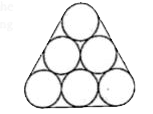Any two protons repel each other, then how is this possible for them to remain together in a nucleus.
To understand how protons can remain together in a nucleus despite their repulsive forces, we can break down the explanation into several steps:
1. Understanding Charge and Repulsion:
- Protons are positively charged particles. According to Coulomb's law, like charges repel each other. Therefore, when two protons are brought close together, they experience a repulsive force.
2. The Concept of the Nucleus:
- The nucleus of an atom is composed of protons and neutrons. Protons repel each other due to their positive charge, which raises the question of how they can coexist in such a small space.
3. Introduction of Nuclear Force:
- While electromagnetic forces (like charges repel) act between protons, there is another fundamental force at play within the nucleus known as the nuclear force (or strong force).
- The nuclear force is a short-range force that acts between nucleons (protons and neutrons). It is much stronger than the electromagnetic force at very short distances (on the order of a femtometer, or 10^-15 meters).
4. Characteristics of Nuclear Force:
- The nuclear force is attractive and works effectively to overcome the repulsive electromagnetic force between protons.
- It binds protons and neutrons together, ensuring that they remain in close proximity within the nucleus.
5. Balance of Forces:
- In a stable nucleus, the attractive nuclear force overcomes the repulsive electromagnetic force between protons. This balance allows protons to remain together in the nucleus despite their natural tendency to repel each other.
6. Role of Neutrons:
- Neutrons also contribute to the stability of the nucleus. They do not carry a charge and help to mediate the nuclear force between protons, further enhancing the binding effect and stability of the nucleus.
Conclusion:
In summary, while protons do repel each other due to their positive charges, they are held together in the nucleus by the strong nuclear force, which is significantly stronger than the electromagnetic repulsion at very short distances.
---
- Protons are positively charged particles. According to Coulomb's law, like charges repel each other. Therefore, when two protons are brought close together, they experience a repulsive force.
- The nucleus of an atom is composed of protons and neutrons. Protons repel each other due to their positive charge, which raises the question of how they can coexist in such a small space.
- While electromagnetic forces (like charges repel) act between protons, there is another fundamental force at play within the nucleus known as the nuclear force (or strong force).
- The nuclear force is a short-range force that acts between nucleons (protons and neutrons). It is much stronger than the electromagnetic force at very short distances (on the order of a femtometer, or 10^-15 meters).
- The nuclear force is attractive and works effectively to overcome the repulsive electromagnetic force between protons.
- It binds protons and neutrons together, ensuring that they remain in close proximity within the nucleus.
- In a stable nucleus, the attractive nuclear force overcomes the repulsive electromagnetic force between protons. This balance allows protons to remain together in the nucleus despite their natural tendency to repel each other.
- Neutrons also contribute to the stability of the nucleus. They do not carry a charge and help to mediate the nuclear force between protons, further enhancing the binding effect and stability of the nucleus.
In summary, while protons do repel each other due to their positive charges, they are held together in the nucleus by the strong nuclear force, which is significantly stronger than the electromagnetic repulsion at very short distances.
Topper's Solved these Questions
- DUAL NATURE OF MATTER AND RADIATION & ATOMS AND NUCLEIBOOK - CBSE COMPLEMENTARY MATERIALCHAPTER - DUAL NATURE OF MATTER AND RADIATION & ATOMS AND NUCLEIEXERCISE - VERY SHORT ANSWER QUESTIONS (1 mark)
10 Videos
- DUAL NATURE OF MATTER AND RADIATION & ATOMS AND NUCLEIBOOK - CBSE COMPLEMENTARY MATERIALCHAPTER - DUAL NATURE OF MATTER AND RADIATION & ATOMS AND NUCLEIEXERCISE - VERY SHORT ANSWER QUESTIONS (2 mark)
39 Videos
- CBSE EXAMINATION PAPER, DELHI REGION - 2015 (CODE NO. 55/1/1/D)BOOK - CBSE COMPLEMENTARY MATERIALCHAPTER - CBSE EXAMINATION PAPER, DELHI REGION - 2015 (CODE NO. 55/1/1/D)EXERCISE - SECTION E
6 Videos
- ELECTROMAGNETIC WAVES AND OPTICSBOOK - CBSE COMPLEMENTARY MATERIALCHAPTER - ELECTROMAGNETIC WAVES AND OPTICSEXERCISE - 1 mark question
11 Videos
Similar Questions
Knowledge Check
Two protons attract each other when
Athe distance between them is 10−10mBthe distance between them is 10−1mCthe distance between them is 10−15mDthe distance between them is 10−6mThere are six circular rings of iron , kept close to each other . A string binds them as tightly as possible. If the radius of each circular iron ring is 1 cm. What is the minimum possible length of string required to bind them ?
 A2(6+3√3+π)cmB6(2+√3)πcmC2(6+π)cmDnone of the above
A2(6+3√3+π)cmB6(2+√3)πcmC2(6+π)cmDnone of the aboveA beam of electrons and protons move parallel to each other in the same direction, then they
Ado not exert any force on each otherBrepel each otherCattract each otherDget rotated to be perpendicular to each other
Two objects repel each other. This repulsion could be due to
View SolutionProtons and neutrons exit together in an extermely small space within the nucleus. How is this possible when protons replel each other?
View SolutionTwo protons are brought towards each other. Will the potential energy of the system decrease or increase? If a proton and an electron be brought nearer, then?
View SolutionWhen two ice cubes are pressed over each other, they unite to form one cube. Which of the following forces is responsible to hold them together ?
View SolutionAssertion When two magnets are brought closer to each other, then they will always repel each other.
Reason According to Lanz's law induced effects always opposes the cause.
View Solution